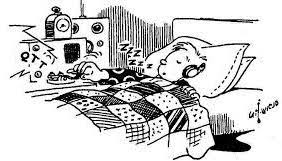QTT – Quality True Telegraphist – Quality Telegraphy Time
NOTE: This page is updated as activities develop!
The QTT Activities idea is evolving. See also the Guide to Quality Telegraphy Time.
Introduction
QTT is an idea promoting the use of non-5NN activities such as QSO with exchange of honest reports and additional information. Using human A1A CW rather than digital (Computer) CW (A1B). QTT is especially encouraged within the top 5kHz of the CW exclusive sub-bands.
- Give a greeting or thanks at start of QSO
- Give honest reports
- Give QTH and OP NAME
- Give info about PWR and ANT or more
- Give thanks and “77” wishes at end of QSO
This is what we consider among the minimum for a very satisfactory QSO.
There is no maximum, it can be activity on a CW Net, a cross-mode QSO, a “rag chew”, or the time-tested and very satisfying two or three over QSO.
QTT for some may include contests, special events, and other “5NN TU” activities, but for the purpose of our definition, it excludes those activities unless they include an honest report in both directions, an exchange of callsigns in both directions during contests, and for “special event” callsigns and DX or SOTA/POTA/etc activations, at least every few minutes information such as name, QTH, or basic information about the special event being sent, not only via the Internet.
QTT Activity
To encourage QSO between CW Operators and to spread out band usage more evenly, QTT activity may also take place as follows:
- On 30m, on or near the QTT CoA (Centre of Activity) Frequency 101xy.5 kHz, where “xy” is the current UTC date. So, on the 1st of the month 10101.5, the 2nd 10102.5 etc, +/- QRM.
- From the top end of the CW band, e.g. 28070, 24915, 21070, 18095, 14070, 10130, 7040, 3570 and tune around within 5kHz from the top and look to answer any CQ (or QTT) calls
- Making use of the Global CW “QSX” Calling Frequencies
- If no CQ are heard, start at the first free frequency from the top of TOP5 and call CQ (or QTT) or do so after making a call on the relevant QSX Calling Frequency then QSY
- If you want to increase chances of contacts and are operational on numerous bands, you can use the “ALG Clock” to determine which band to use during which part of any hour, or a modified version of this (see below).
- There are NO RULES. These are only ideas for guidelines to help you find other QTT, all that matters is going on air when it suits you and having QSO not just an exchange of meaningless numbers no matter at what time and frequency you wish to do so.
The reason we suggesting using the TOP END of the bands (except 30m where the QTT CoA is the first option) is because there are serious plans underway to take these away on several bands and hand them to robot-to-robot digital modes. By using these frequencies with more and longer activities such as QSO we preserve our CW-only bands. The lower and mid portion of CW Bands are often swamped by DX Split Pile Ups and contests.
“QTT Hour”
To increase our chances of having Quality Telegraphy Time with Quality True Telegraphists as well as newcomers to CW, friendly enjoyable Old School QSO and more, we have devised the concept of “QTT Hour” which takes place each day on a different hour, starting at XY:00 UTC whereby XY is the current UTC date. Thus on the 1st of the month from 01:00 UTC, on the 2nd of the month from 02:00 UTC, etc.
In the case of 30m, these 101xy.5 kHz frequencies are encouraged to be used at any time or hour, to vary the band occupancy and encourage more activity on this excellent CW band. Again you may opt to use the 30m QSX/Calling Frequency and QSY to the QTT CoA after announcement.
Again, we are NOT setting rules for QTT. We are simply putting out ideas that you may choose to use to increase your chances of QTT at any time on any band of your choosing.
Notes and Observations
The TOP 5 are also where the most friendly and relaxed QSO tend to take place. It is also where signals will be better as antennas are more resonant. It therefore makes much more sense to start at the top end, and not at the bottom end of the bands.
QTT is not a contest but simply any “non-5NN-TU” activity. QTT emphases longer contacts and the exchange of at least an honest signal report (even using the newer RSN system, QTH, name, and ideally information on Power and Antenna and so on.
The QTT Q code means “the identification which follows is superimposed upon the existing transmmission” and thus can also be used as a prefix to give your CW Club(s) and membership numbers, and/or any former professional service or amateur service callsigns used or held. This serves to promote CW club memberships and friendships among amateurs.
QTT is also held to mean “Quality Telegraphy Time” as in an enjoyable CW QSO without a simple and meaningless “5NN TU”, as well as a Quality True Telegraphist.
See Also: Guide to Quality Telegraphy Time
More information about the original idea of the amateur radio QTT can be found at (no longer updated) VKCW website here.
Campaign Inspired and Created by OT Jean 5T0JL (SK) and Companions
